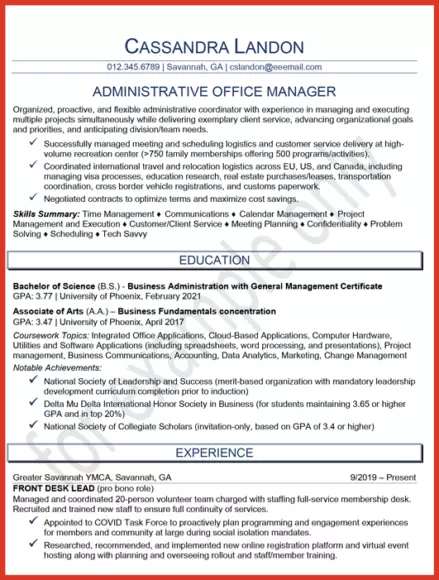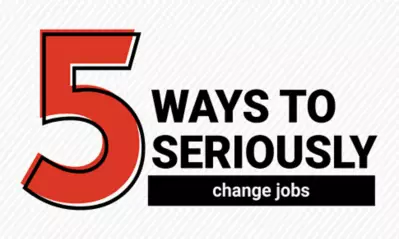Tips to successfully return to work after extended absence

Written by Elizabeth Exline

Reviewed by Jessica Roper, MBA, director of Career Services at University of Phoenix

Looking for a job is one thing. Looking for a job after an extended absence is an altogether different thing. From facing down impostor syndrome to explaining the hiatus, job-seekers face their own set of challenges when returning to work. The good news? They also bring with them their own set of advantages.
If you find yourself in this camp, there are steps you can and should take to find your next role. But one of the most important is also the first.
According to Carol Camerino, a career advisor at University of Phoenix (UOPX), that initial step is to embrace a "possibilities mindset."
Many people, she explains, put constraints on themselves at the outset and view their time away from the workforce as more of a liability than an asset. "But they didn’t hit ‘pause’ on themselves while they were away," she says. "They developed other skills and connections and outlooks. And I think that serves returners really well."
Out of Office
People put their careers on hold for a variety of reasons. The most common might be parenthood, Camerino notes. But other situations call for a break too.
Some people become "accompanying spouses/partners" to their significant others who have to frequently or majorly relocate for work. Others need to care for aging parents or, if they have a health crisis, themselves. And still others leave to honor a dream, like traveling the world for a year, starting a YouTube channel or writing a novel.
"In a perfect world, stepping away from your career path would be normalized," Camerino says.
Lay the groundwork for returning to work
Click on the image to download our returning to the workforce resumé sample.
Since taking a break from the workforce is not the norm, those looking to return to work need to be both confident and strategic about their approach
First, update your resumé. Even if you’ve been out of work, you can include volunteer positions that you’ve held, projects or freelance work you’ve done, or education or certificate programs you’ve completed during the interim. These experiences help paint a picture of your skills and what you’ve been doing while out of the workforce.
If you haven’t been volunteering or studying, you might consider exploring potential skill gaps. Skills are constantly evolving across industries, and the best way to see if you’re up to date is by studying job descriptions for roles you’d typically go for.
"If you are seeing something show up and you don’t have it, that’s a really good nudge to figure out how you can get there," Camerino says.
Camerino also recommends exploring multiple outlets for new opportunities. There are, she says, online organizations that specifically help people return to work after an extended leave. Some companies even offer their own "returnships," designed to help recruit employees back into the workforce.
Also, get your marketing documents in order. Aside from your resumé, you might consider putting together a portfolio and a website. These are all ways to show off your skills and your personal brand.
"There are so many threads necessary to make the tapestry of a job search," says Camerino. You don’t have to do everything, but you do have to take into account which steps are most relevant to (and effective for) your situation.
Seven steps for success
Once you’ve laid a strong foundation for your job search, you’re ready to get started. Here is a step-by-step process for what to do.
- Leverage your network. To be clear, this is not the same as calling your friends and asking for a job. As Camerino explains, "It’s all in how you ask. It’s not, ‘Does anybody have a job for me?’ It is, ‘Exciting news!’" Control the narrative when you post on LinkedIn or social media so that you’re announcing your return, not begging for a job.
- Know your ask. You don’t have to accept the first job that comes along. In fact, you and your prospective employer will both be better off if you are intentional about seeking a position that aligns with your skills and interests. "Know what it is you want," Camerino says. "And it’s not, ‘Can I have a job?’ That’ll clear a room."
- Turn your history into a story. "You absolutely need a powerful, compelling resumé that tells your story, where you’ve been and what’s kept you away from paid work." Address that elephant in the room, in other words, and you take away the negative charge of conjecture.
- Make your job search your priority. Applying to four jobs, considering your search complete for a bit and then checking back in after a few weeks does not create the traction you need to get hired. Unless you want a "prescription for an extended runway," as Camerino puts it, make your job search your job until you find one.
- Don’t take rejection personally. Think of your job search like a marketing project, Camerino suggests. "If a product isn’t moving, the marketing team reviews the plan and makes changes. So, if you’re not getting results, take a step back and think about what you can change in your job search plan to better connect with prospective employers."
- Apply, apply, apply (but try to filter it through your network). Finding and applying for opportunities sourced through your network is an effective way to "try to get through the crowded applicant tracking system," Camerino explains. Develop a job-search strategy that relies on recruiters, considers project-based opportunities and explores positions with smaller companies. Job boards are also good, Camerino adds, but they "are part of the plan. They can’t be the plan."
- Invest in interview prep. Camerino points out that no one ever gets hired off a resumé, which makes the interview experience a crucial part of the hiring process. Prepare accordingly.
Above all, remember that you have value to bring to a company. Sometimes it just takes a little trial and error to figure out where it would best be applied.
"For every job, there could likely be hundreds of applicants," Camerino says. "That means there are hundreds-minus-one very disappointed people walking around.
"Stand strong in what you have to offer."
Wondering how to write your resumé’s better half? Here’s your guide to drafting a stellar cover letter.
Learn how you can close your skill gap before rejoining the workforce.

ABOUT THE AUTHOR
Elizabeth Exline has been telling stories ever since she won a writing contest in third grade. She's covered design and architecture, travel, lifestyle content and a host of other topics for national, regional, local and brand publications. Additionally, she's worked in content development for Marriott International and manuscript development for a variety of authors.

ABOUT THE REVIEWER
Jessica Roper, University of Phoenix director of Career Services, is a seasoned leader with over 15 years of experience in leadership within higher education. She has honed her expertise in student services and career development and is passionate about helping others discover and refine their skills.
This article has been vetted by University of Phoenix's editorial advisory committee.
Read more about our editorial process.
Read more articles like this:



